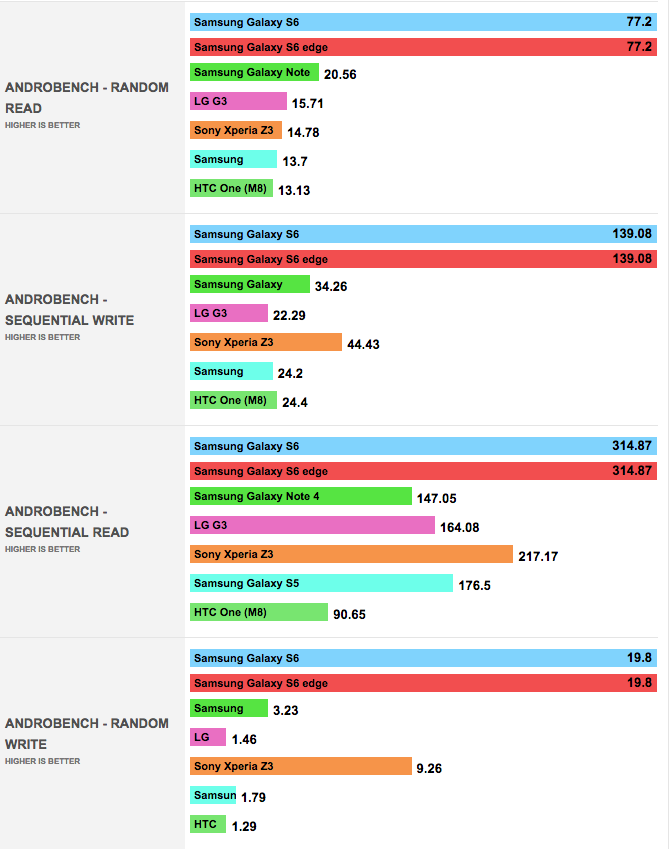
The average consumer won’t spare a thought for the chips powering their brand new Samsung Galaxy S6 or S6 edge, but beyond the glass back and metal frame or even the gently curved edges, there’s something special about this phone. There’s something special in this phone.
Though there were a lot of rumours ahead of last Sunday’s event, most of them centred around the camera in the S6, or the screen in the S6 edge, or either device’s construction. Ever since the phone become official, we’ve been learning a lot more about the other components that make the devices tick. For instance, we now know for certain that the phone will use Samsung’s newly announced Exynos 7, and today brings word that the memory inside the phone is faster than any other flagship — by a long shot.
This year, Samsung ditched the MicroSD slot and added a 128GB option. That fact has been well publicized. But what you might not know is that the S6 and S6 edge use UFS 2.0 NAND flash memory as opposed to eMMC, which is the primary standard for integrated storage in phones.
Phone Arena put both the S6 and S6 edge through their paces with some memory speed benchmarks and the results are pretty stunning. Hardly surprising when you consider Samsung’s earlier claims that this 128GB module was capable of offering a sequential read and write performance boost up to SSD levels. Phone Arena’s benchmarks put the S6 and S6 edge in random read and write as well as sequential read and write tests performed using Androbench.
Granted, all of the phones Phone Arena is comparing the S6 to are 2014 flagships, but that’s what’s available on the market right now (with the exception of the HTC One M8, which is set to be replace by the One M9).
[source]Phone Arena[/source]
MobileSyrup may earn a commission from purchases made via our links, which helps fund the journalism we provide free on our website. These links do not influence our editorial content. Support us here.



